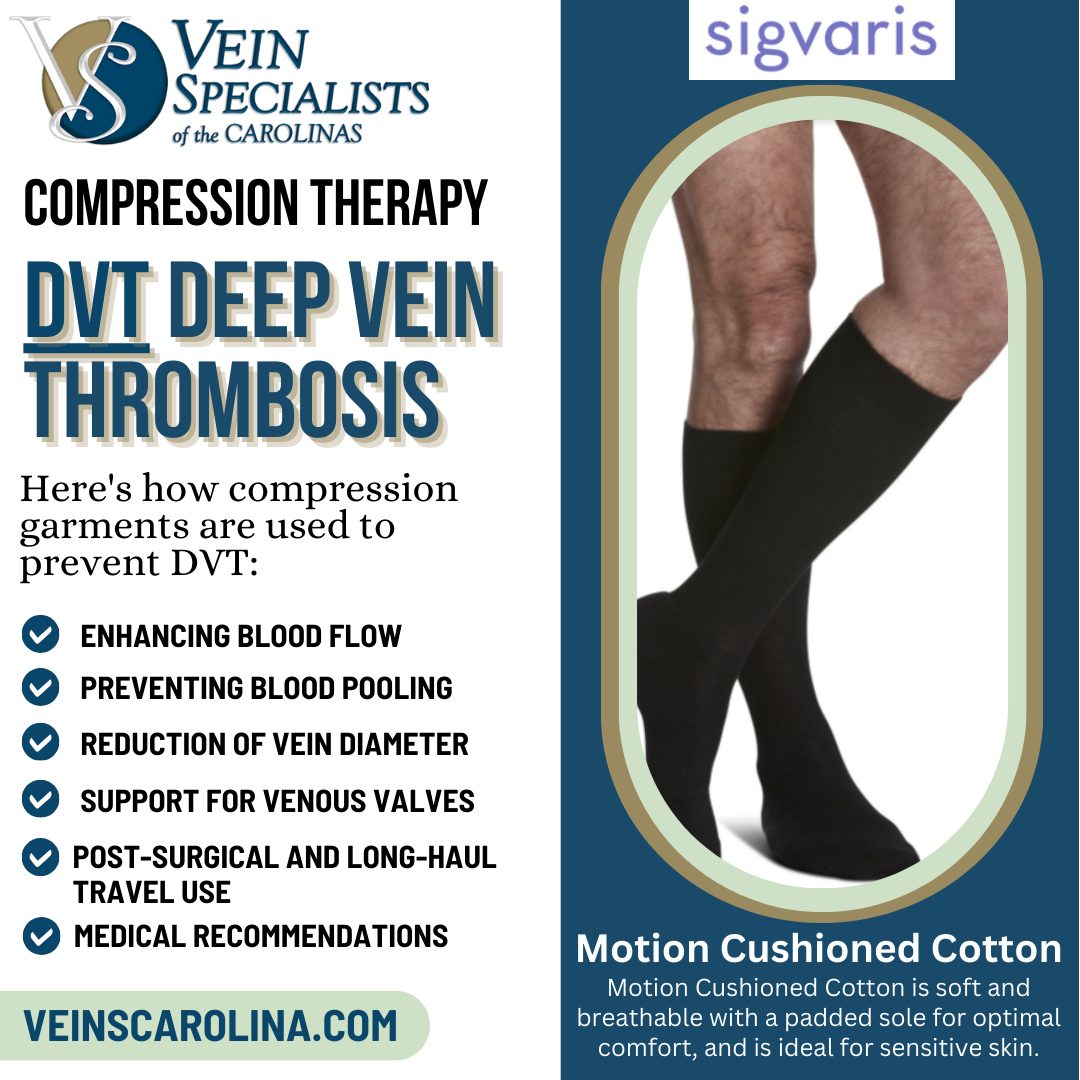Compression garments are commonly used to help prevent deep vein thrombosis (DVT), a condition where blood clots form in deep veins, usually in the legs.
These garments work by applying controlled pressure to the legs, which can improve blood circulation and reduce the risk of clot formation. Here’s how compression garments are used to prevent DVT:
- Enhancing Blood Flow: Compression garments, often in the form of stockings or socks, are designed to provide graduated compression, meaning they exert the greatest pressure at the ankles and gradually decrease the pressure as they move up the legs. This helps to improve blood flow from the legs back to the heart, as it assists the veins in pushing blood against gravity.
- Preventing Blood Pooling: One of the risk factors for DVT is the stagnation of blood in the veins of the legs. Prolonged sitting or immobility can contribute to blood pooling, increasing the risk of clot formation. Compression garments help prevent this by promoting blood flow and reducing the chances of blood pooling.
- Reduction of Vein Diameter: The pressure applied by compression garments can help reduce the diameter of the veins in the legs. This constriction of the veins makes it more difficult for blood to pool and clot.
- Support for Venous Valves: Venous valves are essential for maintaining proper blood flow in the veins and preventing backflow. Compression garments provide support to these valves, helping them function more effectively and reducing the risk of retrograde flow, which can contribute to clot formation.
- Post-Surgical and Long-Haul Travel Use: Compression garments are not only used in medical settings but are also recommended for individuals who are at increased risk of DVT due to surgery or long periods of immobility, such as during long-haul flights. Travel compression socks or stockings are often recommended for these situations to prevent clot formation.
- Medical Recommendations: The use of compression garments to prevent DVT is typically prescribed by healthcare professionals, especially for individuals with a high risk of clot formation. The compression level and type of garment (e.g., knee-high, thigh-high, or full-length stockings) will vary based on the individual’s specific needs and medical condition.
It’s important to note that while compression garments can be effective in reducing the risk of DVT, they should be used under the guidance of a healthcare provider. The pressure level, size, and type of compression garment should be customized to the individual’s condition and needs. Additionally, compression garments are just one aspect of DVT prevention, and other measures such as maintaining physical activity, staying hydrated, and, in some cases, anticoagulant medications may also be recommended to mitigate the risk of DVT.
If you are experiencing DVT Symptoms you should be checked immediately. Contact Vein Specialists of the Carolinas to get a DVT scan and personally fitted for compression garments.
“All We Do Is Veins, All Day Every Day.”
#DVT #DVTAwareness #BloodClot #CompressionTherapy #PreventDVT #DVTPrevention #HealthyLegs #VeinHealth #BloodClotPrevention #ThrombosisAwareness #LegHealth #DVTTreatment #CompressionSocks #VascularHealth #ClotRisk #DVTSupport #ClotAware #VenousHealth #CompressionGarments #TravelDVT #Sigvaris

